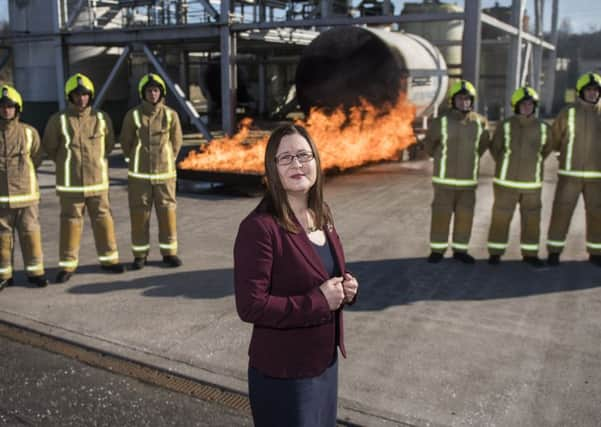Firefighters face taking on paramedic and social care duties


In her first interview since taking up office, Dr Kirsty Darwent said the single service had to explore “innovative” ways of utilising its standing capacity, such as carrying out enhanced home safety visits and greater engagement with youth and social prevention work.
She said more lives and public money could be saved if the service renewed its focus on preventative work as part of the most comprehensive overhaul in the single service’s history.
Advertisement
Hide AdAdvertisement
Hide AdThe SFRS says its current system was designed to respond to risks in the 1940s. With more extreme weather events, the threat of terrorism and an ageing population, Darwent said the service “can do something different and deliver much more with what we’ve got”.
While last week’s blaze on Glasgow’s Sauchiehall Street was a stark reminder of how attending fires is the service’s “core business”, Darwent said the changing nature of risk demanded adaptability.
“If we think about the NHS and local authorities who are really struggling with demand, the opportunity to be able to support them by reducing that demand feels really important,” she added.
The SFRS, established five years ago today, envisages a co-responding role with the Scottish Ambulance Service to out of hospital cardiac arrests as being key to the changes. Its crews have already undertaken extensive trials, responding to emergencies where an appliance was closer to the scene than an ambulance was.
A preliminary evaluation of the trials found that out of 146 such incidents, the SFRS made 41 potential lifesaving interventions with 15 positive outcomes – a success rate of 36 per cent. Such work was a ”huge success”, said Darwent, and she is keen to see the co-responder arrangement formalised.
“It might cost a little extra for the Fire and Rescue Service, but it’s saving money elsewhere in the public sector.”
Darwent said she understood the reservations of those asking why the SFRS wants to “blur the boundaries” between itself and other emergency services, but said it was about providing “better value” and, more importantly, saving lives.
A chartered psychologist who served as vice chair of the NHS Ayrshire and Arran health board, Darwent said other changes proposed as part of the SFRS transformation programme include deploying more “responsive” modes of transport, and new technologies such as ultra high-pressure lances.
Advertisement
Hide AdAdvertisement
Hide AdA public consultation on the programme runs until 14 May, with the SFRS continuing to hold talks with the Fire Brigades Union Scotland.
Last month the union passed a vote of no confidence in senior SFRS management, pointing to continuing discrepancies over terms and conditions related to the integration of Scotland’s legacy fire services.
However, Darwent said the discussions are proving productive: “We have been continuing to talk and the process has been collaborative and positive.”